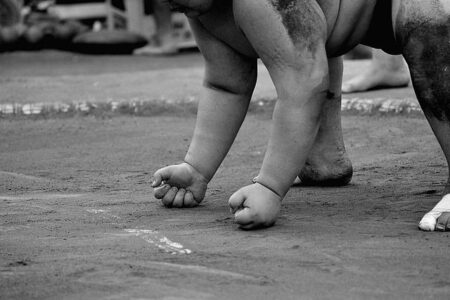A groundbreaking study published in Nature has unveiled fresh insights into kinship and social organization in Neolithic China through the analysis of ancient DNA from Shimao city. Once a thriving urban center over 4,000 years ago, Shimao’s genetic record provides unprecedented evidence of family structures and community dynamics during a pivotal era in early Chinese civilization. This research not only sheds light on the complexities of ancient social networks but also offers a new perspective on how kinship influenced the development of one of the world’s earliest urban societies.
Ancient DNA Reveals Family Structures in Neolithic Shimao City
Recent advancements in paleogenomics have uncovered remarkable insights into the social organization of one of Neolithic China’s most enigmatic urban centers. Analysis of ancient DNA extracted from burial sites in Shimao reveals a complex network of kinship ties that challenges previous assumptions about community formation during this period. Contrary to the idea of isolated family units, genetic data indicates that extended kin groups lived together and played significant roles in the city’s social fabric. This collaborative structure likely contributed to Shimao’s rapid development and its prominence as a cultural hub around 4,000 years ago.
The study identified key patterns including:
- Patrilineal Lineages: Male descendants share a distinct Y-chromosome haplogroup, suggesting inheritance and property transmission followed paternal lines.
- Matriarchal Influence: Mitochondrial DNA diversity points to the integration of women from outside Shimao, highlighting marriage alliances and women’s role in strengthening external relations.
- Communal Burial Practices: Genetic clusters correspond closely with burial arrangements, revealing that kinship governed mortuary customs and likely reinforced social order.
| Kinship Component | Genetic Indicator | Implication |
|---|---|---|
| Patrilineal Descent | Y-chromosome haplogroups | Inheritance along male lines |
| Marriage Alliances | Mitochondrial DNA diversity | Women integrated from external groups |
| Burial Clusters | Genetic relatedness | Kinship-based mortuary rituals |
Insights into Kinship and Social Organization from Genetic Evidence
Recent analysis of ancient DNA from Shimao city has revolutionized our understanding of Neolithic kinship structures in northern China. Genetic sequencing reveals a complex web of familial ties, demonstrating that Shimao’s inhabitants practiced a blend of both patrilineal and matrilineal descent systems. This duality challenges longstanding assumptions that early Chinese societies were predominantly patrilocal, suggesting instead a more nuanced social fabric where power and inheritance flowed through multiple familial lines. Moreover, the genetic data shows a strong emphasis on maintaining alliances within geographically close but genetically diverse groups, an indication of deliberate social and political strategies designed to foster community cohesion and cooperation.
The genetic markers also shed light on social hierarchy and residential patterns, revealing distinct clusters that correspond with burial practices and artifact distributions. Key findings include:
- Extended family integration: Clans were not isolated nuclear families but comprised extensive kin networks intertwined over generations.
- Gender-specific mobility: Evidence indicates that females tended to move between groups more frequently, suggesting exogamous marriage practices.
- Elite lineage continuity: High-status graves were associated with genetically identifiable lineages, underscoring inheritance of social rank.
| Genetic Indicator | Social Interpretation | Supporting Evidence |
|---|---|---|
| mtDNA Diversity | Female mobility between clans | Varied mtDNA haplogroups within burial sites |
| Y-Chromosome Clustering | Patrilineal descent emphasis | Homogeneous Y-haplogroups in elite tombs |
| Shared Autosomal Segments | Extended kinship networks | High genomic relatedness among neighbouring households |
Experts Recommend Integrating Genomic Data in Archaeological Research of Early China
Recent advances in ancient DNA analysis have revolutionized the understanding of social structures in Neolithic China, revealing intricate kinship and residence patterns that were previously obscured by traditional archaeological methods. The genetic evidence extracted from burials at Shimao city highlights a complex network of familial relationships, suggesting that patrilineal descent and exogamic marriage practices played a pivotal role in community organization. Experts emphasize that integrating genomic data into archaeological frameworks allows researchers to reconstruct more precise narratives of population movements, social stratification, and cultural exchange during this formative period in Chinese prehistory.
Key findings from the Shimao study underline several transformative insights, including:
- Identification of direct paternal lineages within communal burial clusters
- Evidence supporting matrilocal residence patterns, challenging longstanding assumptions
- Genetic signatures indicating influences from northern steppe populations and indigenous groups
- The coexistence of genetically distinct populations, pointing to complex social alliances
| Aspect | Genomic Insight |
|---|---|
| Kinship Structure | Dominant patrilineages with occasional matrilineal links |
| Residence Pattern | Mostly matrilocal communities |
| Population Admixture | Mix of local and steppe genetic markers |
| Social Organization | Hierarchized clans with intergroup marriages |
Closing Remarks
The groundbreaking analysis of ancient DNA from Shimao city offers an unprecedented glimpse into the kinship structures of Neolithic China, reshaping our understanding of social organization during this formative period. As researchers continue to decode the genetic legacy preserved within these ancient remains, future studies promise to deepen our insight into the complex networks that underpinned early urban societies in East Asia. This discovery not only enriches the archaeological narrative of Shimao but also sets a new benchmark for interdisciplinary approaches in uncovering the human stories embedded in our distant past.




